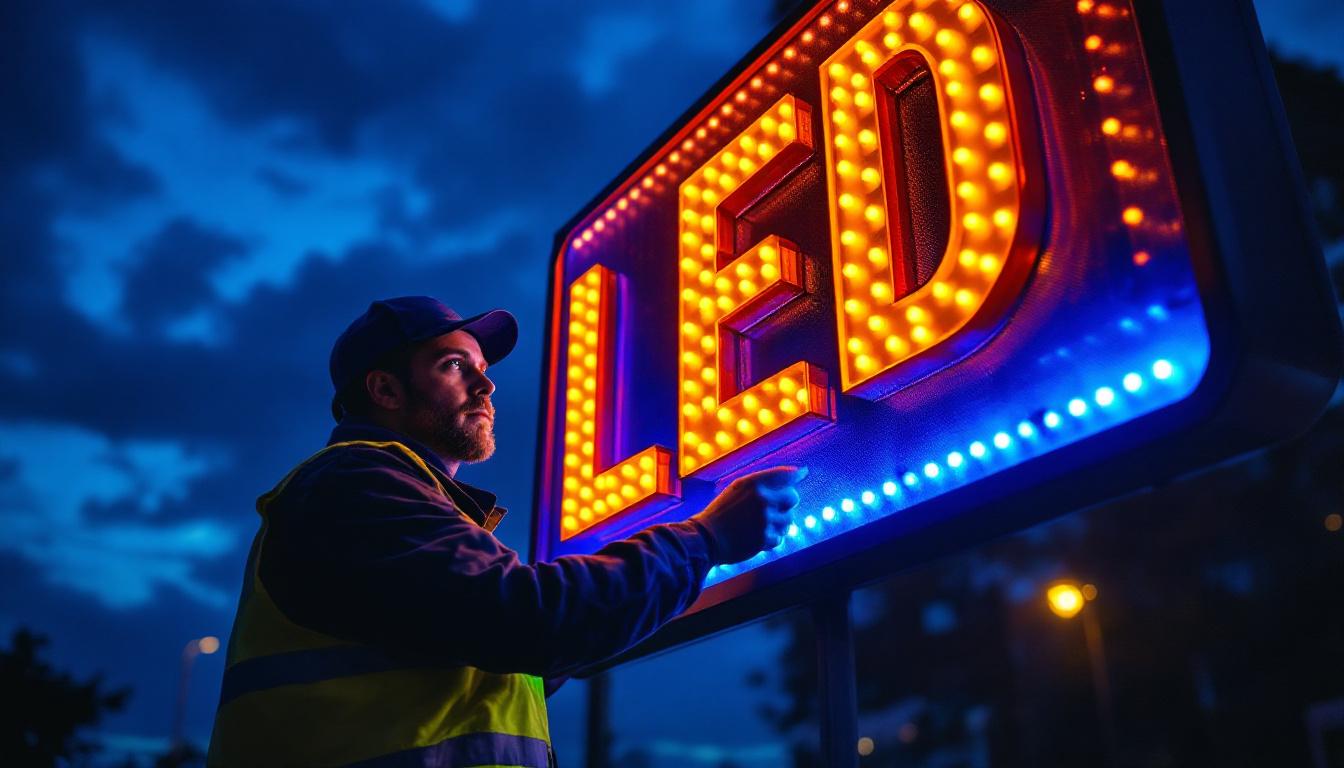
Lighting contractors deal with a variety of bulb types every day, yet the rapid advancements in lighting technology can make it challenging to stay current. Knowing the fundamental characteristics of different bulbs is essential for recommending the right solutions to clients, ensuring energy efficiency, and meeting design requirements.
Light bulbs are typically categorized by their technology, shape, base type, and performance attributes such as brightness and color temperature. Each type has its own advantages and limitations, making it crucial to understand where and how to use them effectively.
Incandescent bulbs have been the traditional choice for decades. They produce light by heating a tungsten filament until it glows. While they offer excellent color rendering and warm light, their energy efficiency is poor compared to modern alternatives. Most incandescent bulbs convert less than 10% of the energy they consume into visible light, with the rest lost as heat.
Despite their inefficiency, incandescent bulbs are still used in applications where color quality and dimming performance are critical. However, many regions have phased out or restricted their use due to energy regulations, making them less common in new installations. The nostalgic warmth they provide is often favored in residential settings, particularly in living rooms and dining areas, where ambiance plays a significant role in the overall design. Moreover, their compatibility with dimmer switches allows for versatile lighting control, enhancing the user experience in various environments.
Halogen bulbs are a type of incandescent bulb but with a halogen gas inside the envelope that increases efficiency and lifespan. They produce a bright, white light and are often used in task lighting, floodlights, and automotive applications.
Halogens are more efficient than traditional incandescents but still lag behind LED and CFL options. They also generate significant heat, which can be a concern in enclosed fixtures or areas with limited ventilation. The bright light they emit is particularly beneficial in settings that require high visibility, such as workshops or retail spaces, where showcasing products effectively is essential. Additionally, halogen bulbs can be easily integrated into various lighting fixtures, making them a flexible choice for both residential and commercial applications. Their ability to maintain color quality over time makes them a preferred option for art galleries and museums, where the accurate representation of colors is paramount.
Energy efficiency is a top priority for lighting contractors, especially as clients seek to reduce operating costs and meet sustainability goals. Compact Fluorescent Lamps (CFLs) and Light Emitting Diode (LED) bulbs have become the go-to choices for energy-conscious projects.
CFLs use a gas-filled tube and a small amount of mercury vapor to produce light. They are roughly four times more efficient than incandescent bulbs and last significantly longer. CFLs are available in a range of color temperatures, from warm white to daylight, making them versatile for various settings.
However, CFLs have some drawbacks. They require a warm-up period to reach full brightness, and their mercury content demands careful disposal. Additionally, they are less compatible with dimmer switches unless specifically designed for that purpose. Despite these limitations, CFLs remain a popular choice for many consumers due to their initial affordability and widespread availability. Many manufacturers have also begun to produce CFLs that are designed to minimize these issues, offering instant-on capabilities and lower mercury content, which can help alleviate some environmental concerns.
LED technology has transformed the lighting industry. LEDs use semiconductors to convert electricity directly into light, resulting in exceptional energy efficiency and longevity. LEDs consume up to 80% less energy than incandescent bulbs and can last 25 times longer.
LEDs offer a broad spectrum of color temperatures and excellent color rendering, making them suitable for everything from residential to commercial and industrial applications. They are highly durable, perform well in cold environments, and are fully dimmable with compatible controls. The versatility of LEDs extends beyond just their physical properties; they can be integrated into smart lighting systems, allowing users to control their lighting remotely via smartphones or voice-activated devices. This smart technology not only enhances convenience but also contributes to further energy savings by enabling users to set schedules and automate lighting based on occupancy or time of day. As the technology continues to evolve, the potential for LEDs to further reduce energy consumption and enhance user experience is becoming increasingly promising.
Beyond general lighting, contractors often encounter specialty bulbs designed for specific purposes. Understanding these can help tailor lighting solutions that meet unique client needs.
Fluorescent tubes remain common in commercial and industrial settings. They provide bright, even lighting over large areas and are available in various lengths and diameters. Modern T8 and T5 tubes are more energy-efficient than older T12 models and can be paired with electronic ballasts for improved performance.
While LEDs are increasingly replacing fluorescent tubes, many installations still rely on them due to cost considerations and fixture compatibility.
HID bulbs, including metal halide, high-pressure sodium, and mercury vapor lamps, are used in outdoor and industrial applications requiring intense illumination. They offer high lumen output and long life but often have longer warm-up times and require specialized ballasts.
HID technology is gradually being supplanted by LED alternatives, which provide similar or better performance with lower energy consumption and maintenance needs.
Smart bulbs integrate LED technology with wireless communication, allowing users to control lighting remotely via apps or voice assistants. Features include adjustable color temperature, brightness, and scheduling.
For contractors, smart bulbs offer opportunities to provide clients with advanced lighting control solutions that enhance convenience, security, and energy management. Compatibility with existing systems and network infrastructure should be evaluated during installation planning.
Choosing the right bulb goes beyond just the type. Several technical specifications influence performance and suitability for specific applications.
Lumens measure the amount of visible light emitted by a bulb, while wattage indicates energy consumption. Modern lighting design focuses on lumens per watt (lm/W) to assess efficiency. For example, an LED bulb producing 800 lumens may consume only 10 watts, whereas an incandescent bulb producing the same light output might consume 60 watts.
Contractors should prioritize lumens over wattage when specifying bulbs to ensure clients receive adequate brightness without unnecessary energy use.
Color temperature, measured in Kelvins (K), describes the appearance of light. Lower temperatures (2700K-3000K) produce warm, cozy light, while higher temperatures (4000K-6500K) yield cooler, daylight-like illumination.
CRI indicates how accurately a light source renders colors compared to natural light. A CRI of 80 or above is generally acceptable for most applications, but retail, art galleries, and healthcare settings often require CRIs above 90 for true color fidelity.
Bulb bases come in various sizes and styles, such as Edison screw (E26, E27), bi-pin, GU10, and bayonet. Ensuring the bulb base matches the fixture socket is essential to avoid installation issues.
Lighting contractors must verify base compatibility, especially when retrofitting older fixtures with newer bulb types like LEDs.
Proper installation and maintenance practices extend bulb life and optimize performance, reducing callbacks and enhancing client satisfaction.
Some bulbs, particularly halogens and HID lamps, generate substantial heat. Fixtures must allow for adequate ventilation to prevent overheating, which can shorten bulb lifespan and pose safety risks.
LEDs produce less heat but still require heat sinks to dissipate thermal energy. Selecting fixtures designed for LED bulbs ensures optimal thermal management.
Many clients request dimmable lighting for ambiance and energy savings. Not all bulbs are compatible with dimmer switches, and mismatched combinations can cause flickering, buzzing, or reduced bulb life.
Contractors should specify bulbs and dimmers designed to work together and test installations thoroughly.
CFLs contain mercury and require special disposal methods to prevent environmental contamination. LEDs, while free of hazardous materials, contain electronic components that should be recycled properly.
Providing clients with guidance on bulb disposal and selecting environmentally friendly options aligns with sustainable practices and regulatory compliance.
Lighting technology continues to evolve rapidly, offering new opportunities and challenges for contractors.
LEDs are becoming more efficient, with improved color rendering and integrated smart features. Innovations such as tunable white lighting allow users to adjust color temperature throughout the day, enhancing comfort and productivity.
Contractors should stay informed about emerging LED products to offer cutting-edge solutions.
Lighting is increasingly integrated into building management systems, enabling automated control based on occupancy, daylight availability, and energy demand.
Lighting contractors play a critical role in installing and configuring these systems, requiring knowledge of communication protocols and control hardware.
Energy codes and green building certifications are driving adoption of efficient lighting solutions. Compliance not only reduces energy costs but can also provide incentives and improve marketability.
Contractors should be familiar with local codes and standards to guide clients toward compliant and cost-effective lighting designs.
Lighting contractors must navigate a complex landscape of bulb types, technologies, and specifications to deliver optimal lighting solutions. Mastery of the characteristics, advantages, and limitations of each bulb type ensures informed recommendations that meet client needs and regulatory requirements.
Energy-efficient options like LEDs dominate the market, but understanding specialty bulbs and emerging trends is equally important. Attention to installation details, compatibility, and environmental impact further enhances project success.
Staying current with technological advances and industry standards empowers lighting contractors to provide expert service and maintain a competitive edge.
Ready to elevate your lighting game? Look no further than LumenWholesale for a comprehensive range of top-quality, spec-grade lighting products at unbeatable wholesale prices. Say goodbye to inflated markups and hello to superior lighting solutions that meet the highest industry standards. With our hassle-free bulk buying and free shipping, you can ensure every project shines with reliability and high performance. Don’t compromise on quality or value—discover wholesale lighting at the best value today and light up your work with the excellence it deserves.

Discover everything lighting contractors need to know about sensor floodlights in this comprehensive guide.

Discover the key insights lighting contractors need to meet client expectations when it comes to black pendant bases with chains.

Discover how lighting contractors can gain a competitive edge by mastering the installation of washer and dryer outlets.

Discover how LED lights are revolutionizing the signage industry, offering lighting contractors unparalleled energy efficiency, durability, and design flexibility.